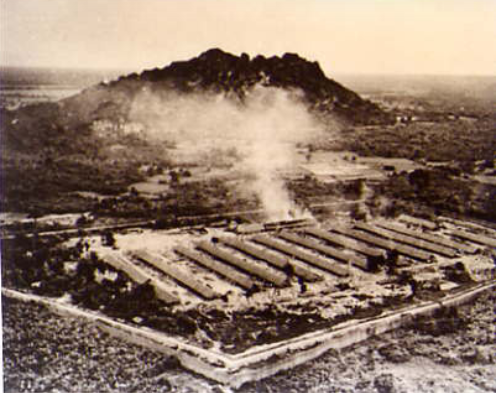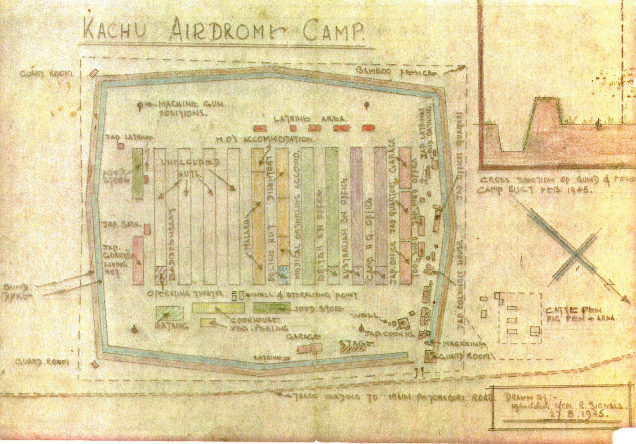Kachu Mountain Camp - Thailand
Kachu Mountain Camp
In early 1945 a work force was selected from hospitals (light sick) such as Chungkai and Tarsoe and other camps and sent to Kachu Mountain located some one hundred miles south of Bangkok, at the beginning of Kra Peninsula near a town called Phetchaburi. Their task was to construct two airfields – the Japanese were preparing for the retreat of their own troops from Burma and facing the possibility of an Allied invasion.
Kachu Mountain was named after a large mountain on the plains a few miles distant. On top of Kachu Mount itself was a tall white pagoda, evidently a landmark for Allied planes. Often on moonlight nights POWs would hear allied planes overhead and then heard them change direction as they reached the Pagoda. Because of its role in guiding Allied bombers to their targets, Kachu Mountain with its white pagoda became a beacon of hope for the POWs.
Situated on a plain in the midst of former rice paddies, Kachu Mountain was not a pleasant location. It was described as ‘flat, hot and dusty with little more than a clearing with a row of huts for eleven hundred prisoners (500 British, 600 Australian). It has also been suggested there may have been as many as 1500 British, American and Australian POWs here and by 11 March the camp had increased to 2,281 POWs with 831 of these in hospital. Many light sick were being transferred from Chungkai, the administration quietly pleased to be rid of them.
The perimeter fence was not the usual bamboo, but thorn.
The POWs had been rehabilitating after the completion of the railway and with their very poor limited diet were not in any fit state to begin a project requiring heavy physical work. Construction required POWs to hand-drill and break stones from a nearby quarry to ballast the airstrip. These sites were several miles from camp. Not only were the POWs weary and morale poor – their guards appeared so too! The guard’s uniforms were patched and shoddy.
The Japanese were also on high alert now aware of the Free Thai guerillas. They feared Allies had parachuted in under the cover of bombing raids to organise guerillas. Japan had suffered recent battle losses in Burma to the British and it was thought there could be POW uprising.
The POWs were not happy about being asked to construct an airfield for the Japanese to use against any Allied invasion and hinder their own release.
According to WX7204 Wally Lynn there were two airstrips built at Kachu Mountain. The first one turned to mud with torrential rain and the second airstrip was constructed with granite. This was the airstrip the Allied DC3s landed on to take out the POWs at the end of the war.
The POWs at Kachu and Ubon did not have radio access and were completely cut-off from the world and essential news of the war. They felt much abandoned and isolated.
Kachu Mountain was meant to be a temporary work camp and only contained limited facilities and amenities. POWs were not allowed to dig new latrines and not allowed a barber’s shop.
There was a chronic shortage of water as they were not near a river. A well was dug in the camp. There were limited latrines and a chronic shortage of water.
Les Cody in “Ghosts in Khaki” wrote from information gathered from 2/4th men working here
“Discipline within the camp was strict and petty with the usual quota of basher guards all aptly named: ‘The Snake’ ‘The Gobbler’ ‘Lt. Boots’ etc.
The camp also experienced frequent and terrifying electrical storms and a number of pythons which eventually ended in the stew.”
In April 1945 the men were moved further north through Bangkok to Nakon Nayok, approximately 100 km to the north-east.
Following is Danny Bevis’ account of Kachu Mountain.
‘March to Kachu Mountain 86 km (53 miles). Self picked up in truck 15 miles out (sick with malaria) and arrive Kachu Mountain 22 Feb 1945. The rest (POWs) arrive in a bad way on 24 Feb 1945. Building two aerodromes No. One 8 kms from POW Camp. No. two, 3 kms from POW Camp. (Remember POWS had to walk to and from work back to their camps – 8 and 3 kms is a long way when you are sick and exhausted at the end of the day) Conditions and Nips no Good. Self malaria all the time, nearly passed out.
28 April 1945 – 26 planes go over strafing the aerodrome. Machine Gun mounted by Nips outside hospital hut. Plenty Blackwater fever. Storms every night. 7 huts blown down in typhoon. I eat python and armadillo, not too bad.’
Reconnaissance photo of Kachu Mountain Camp
Plan of Kachau Mountain Camp
Courtesy of Strike a New Note!”: Kachu Mountain and Ubon
At the end of the war many men from the Prachaub Kirikhan Mergui Escape Road were flown to Kachu Mountain Camp from near the coast of Burma. The landing strip in the jungle was completed in time for three C47 Dakota aircraft to land and firstly evacuate the British POWs to Rangoon. The Australians at Kachu Mountain Camp were flown to Singapore.
The following is an Affidavit by J H Flanigan WX9777 who was POW at Kachu Mountain Camp from 15 Feb 1945 to 11 Sept 1945 and prepared for the War Trials.
The Japanese Camp Commander was known to POWs as “Paddle Foot”. He allowed his subordinates to virtually run the Camp which became known for for brutal guards such as “Lt. Boots”, “The Snake”, “The Gobbler” and ‘Gold Tooth” to name a few.
Flanigan himself received several unprovoked beatings as did WX9391 Sgt Doolan of the 2/4th.
“The Gobbler” and “Gold Tooth” took care of the administration and basically ran the camp.
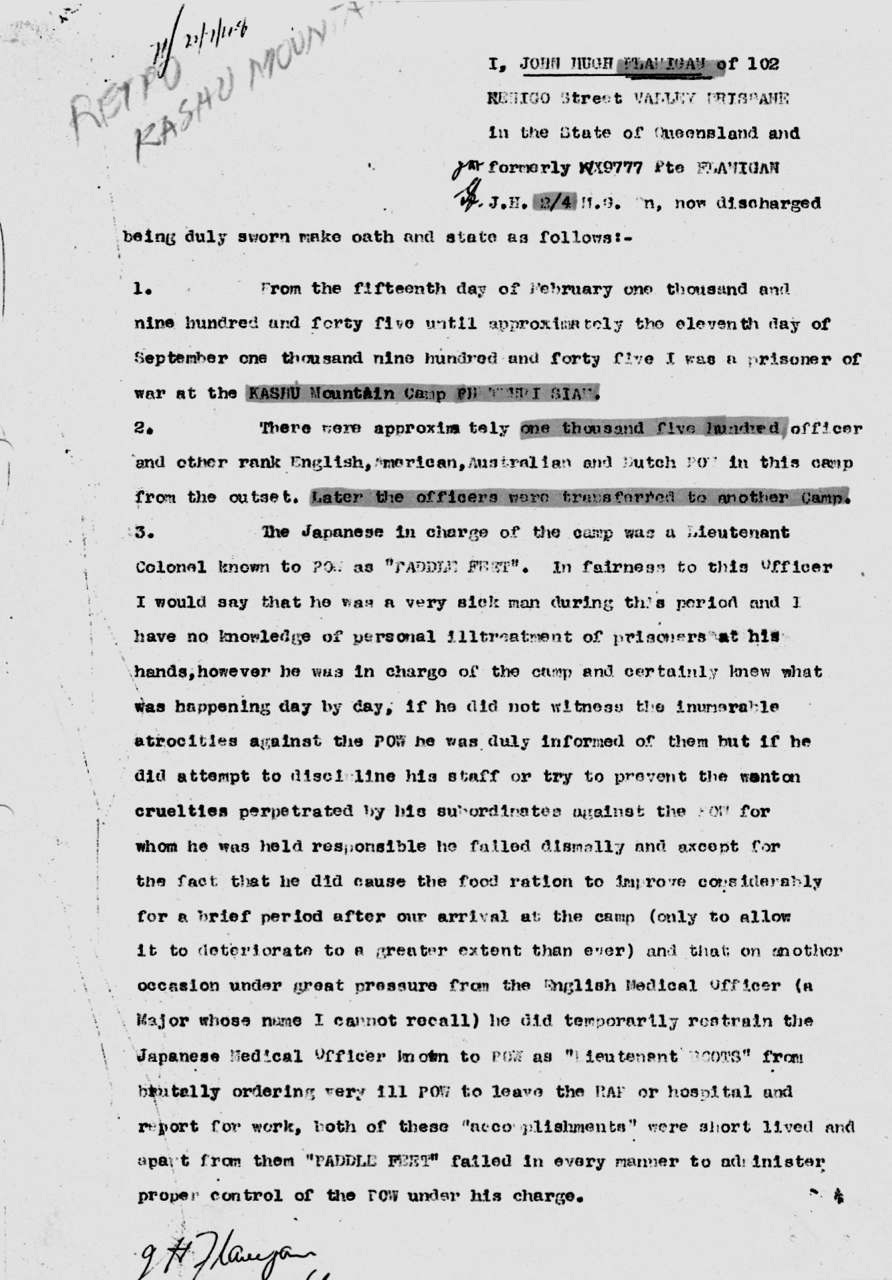
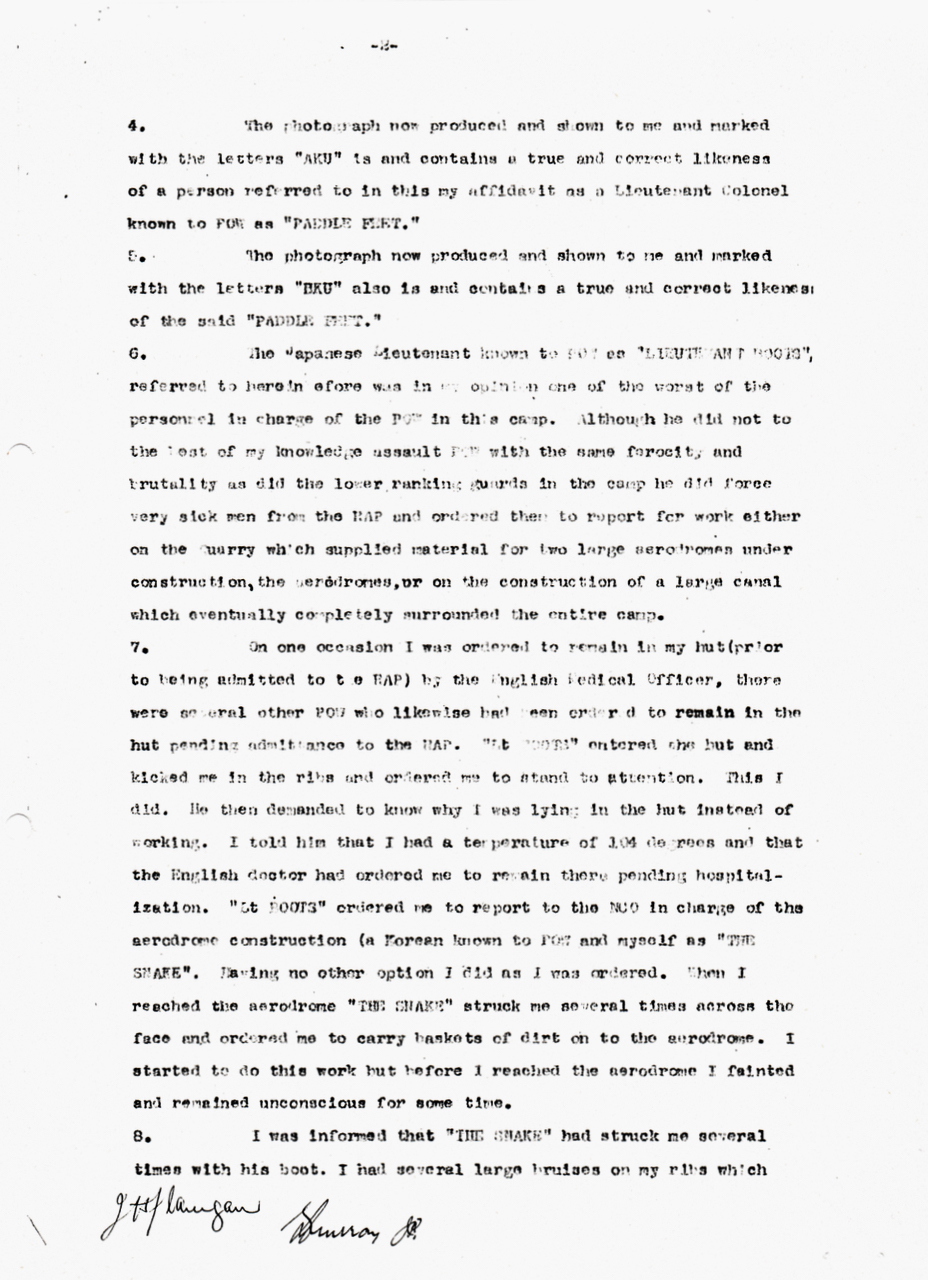
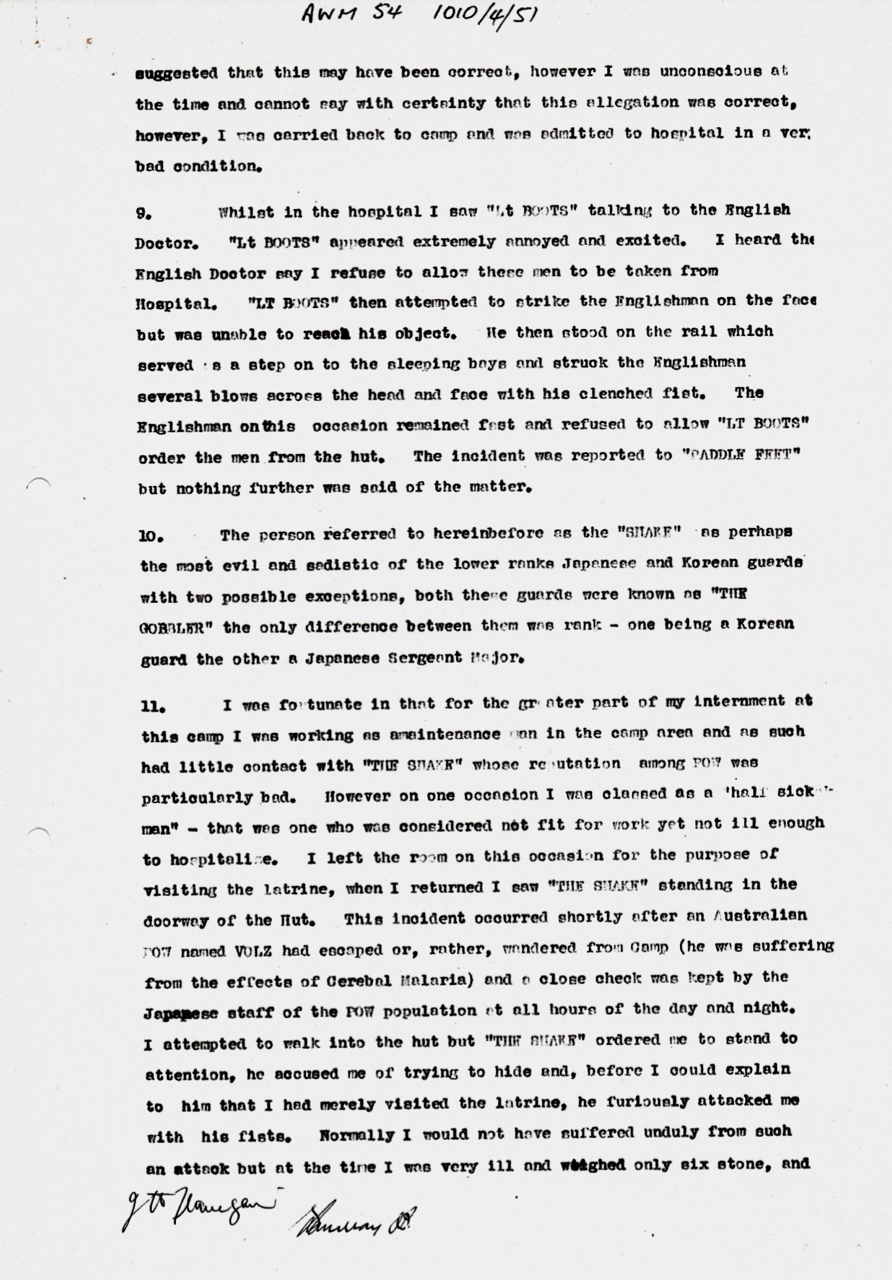
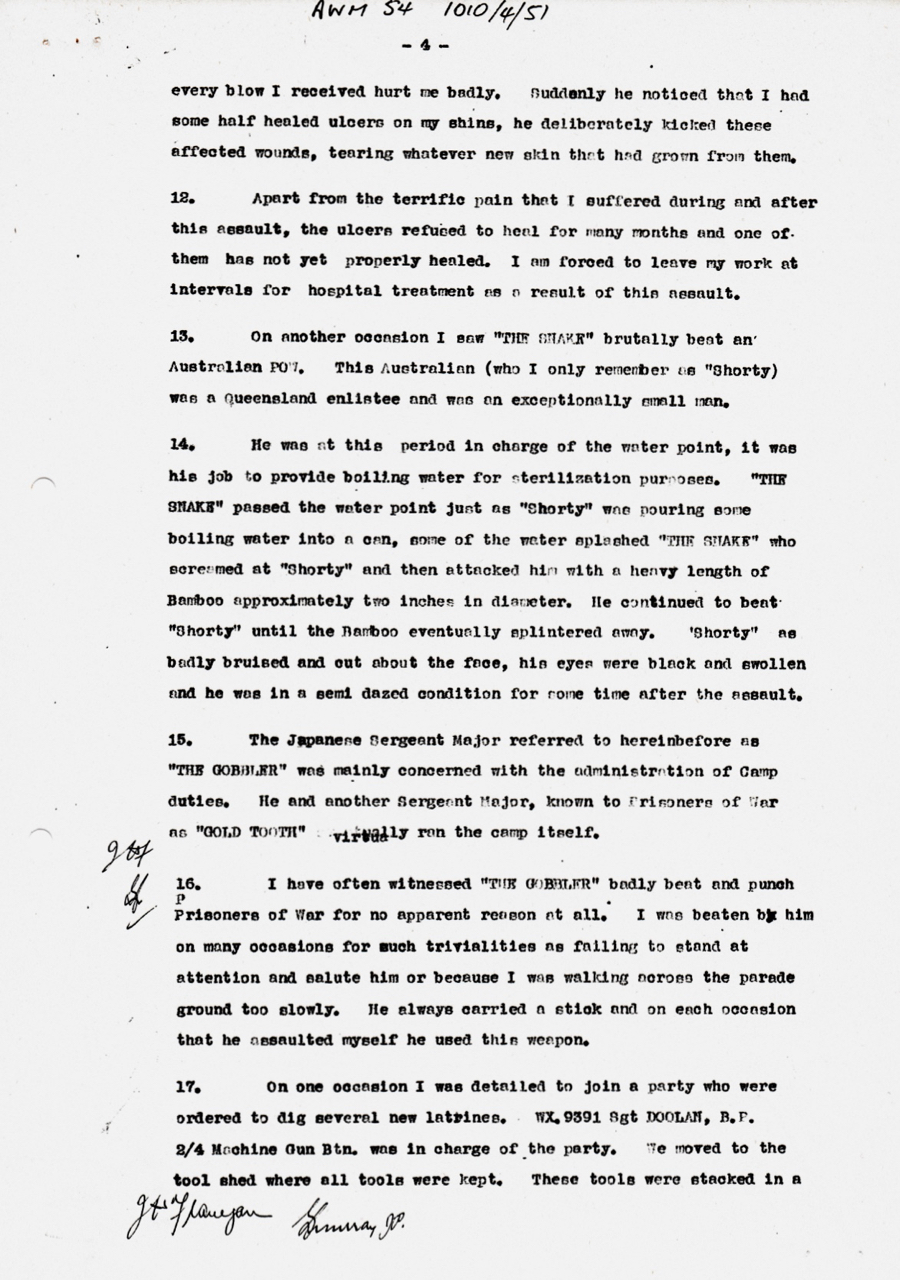

The following is from the Diary of Danny Bevis:
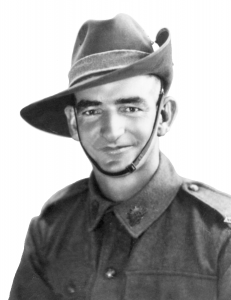
‘March to Kachu Mountain 86 km/53 miles (from Non Pladuk). Self (Bevis) picked up in truck 15 miles out (malaria) and arrive Kachu Mountain 22 February. The rest arrive in a bad way on 24 February. Building two aerodromes No. 1 eight km from camp, No. 2 three km from camp. Conditions and nips no good. Self malaria all the time, nearly passed out. 26 planes ago over 28 April 1945, strafing drome. Machine gun mounted by nips outside hospital camp. Plenty blackwater fever. Storms every night. 7 huts blown down in typhoon. I eat python and armadillo, not too bad.
July 1945 – 1,000 POWs were transferred from Kachu Mountain Camp to Petchaburi, Thailand.’

